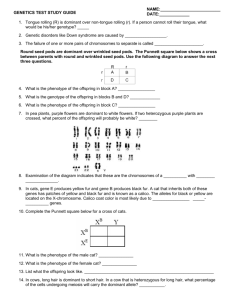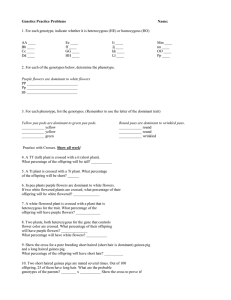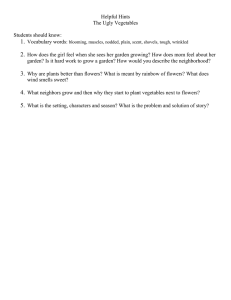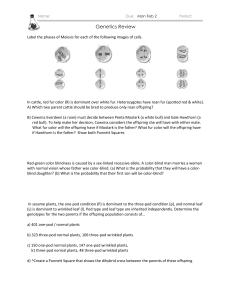Review - Genetics and Evolution
advertisement
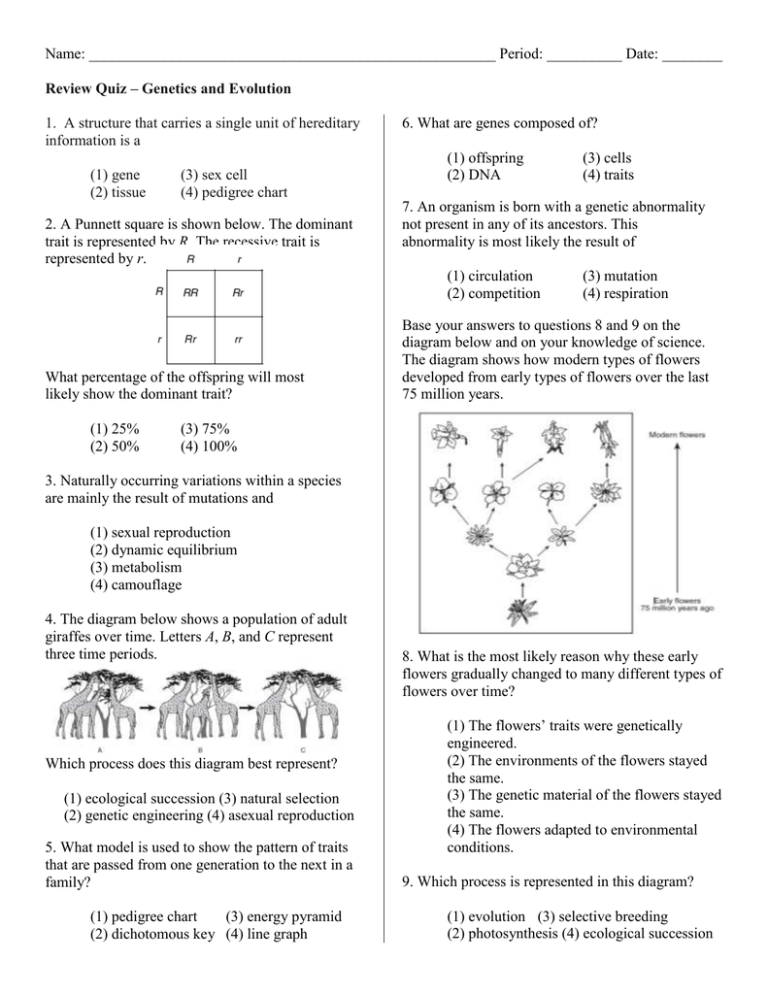
Name: ______________________________________________________ Period: __________ Date: ________ Review Quiz – Genetics and Evolution 1. A structure that carries a single unit of hereditary information is a (1) gene (2) tissue (3) sex cell (4) pedigree chart 2. A Punnett square is shown below. The dominant trait is represented by R. The recessive trait is represented by r. 6. What are genes composed of? (1) offspring (2) DNA 7. An organism is born with a genetic abnormality not present in any of its ancestors. This abnormality is most likely the result of (1) circulation (2) competition What percentage of the offspring will most likely show the dominant trait? (1) 25% (2) 50% (3) cells (4) traits (3) mutation (4) respiration Base your answers to questions 8 and 9 on the diagram below and on your knowledge of science. The diagram shows how modern types of flowers developed from early types of flowers over the last 75 million years. (3) 75% (4) 100% 3. Naturally occurring variations within a species are mainly the result of mutations and (1) sexual reproduction (2) dynamic equilibrium (3) metabolism (4) camouflage 4. The diagram below shows a population of adult giraffes over time. Letters A, B, and C represent three time periods. Which process does this diagram best represent? (1) ecological succession (3) natural selection (2) genetic engineering (4) asexual reproduction 5. What model is used to show the pattern of traits that are passed from one generation to the next in a family? (1) pedigree chart (3) energy pyramid (2) dichotomous key (4) line graph 8. What is the most likely reason why these early flowers gradually changed to many different types of flowers over time? (1) The flowers’ traits were genetically engineered. (2) The environments of the flowers stayed the same. (3) The genetic material of the flowers stayed the same. (4) The flowers adapted to environmental conditions. 9. Which process is represented in this diagram? (1) evolution (3) selective breeding (2) photosynthesis (4) ecological succession 10. The chart below shows the inferred evolution of some dinosaurs during three time periods in Earth’s history. Base your answers to questions 13 and 14 on the information below and on your knowledge of science. In pea plants, the green-pod gene (G) is dominant over the yellow-pod gene (g). 13. a. Two pea plants with green pods, Gg × GG, were crossed. Complete the Punnett square below to show the results of this cross. Which dinosaur most likely evolved from Coelophysis? (1) Theodont (2) Tyrannosaurus (3) Triceratops (4) Camptosaurus 11. When the environment changes more quickly than a species can adapt, the species may become (1) extinct (3) diverse (2) dominant (4) overpopulated 12. The drawing below represents a pair of chromosomes. b. What percentage of the offspring produced by this cross will most likely have green pods? __________________ % 14. Show the genetic makeup of two parent pea plants whose offspring would all have yellow pods. ___________ × ___________ Base your answers to 15 & 16 on the information below. Pea plants can produce round or wrinkled peas. The genes for round and wrinkled peas are: R = round (dominant) r = wrinkled (recessive) The area labeled “bands” shows the location of 15. Complete the Punnett Square below, which shows a cross between a hybrid round-pea plant (Rr) and a wrinkled-pea plant (rr). (1) egg cells (2) sperm cells (3) reproductive hormones (4) specific genes 16. What percentage of the offspring were Round = _____________ Wrinkled = _____________
